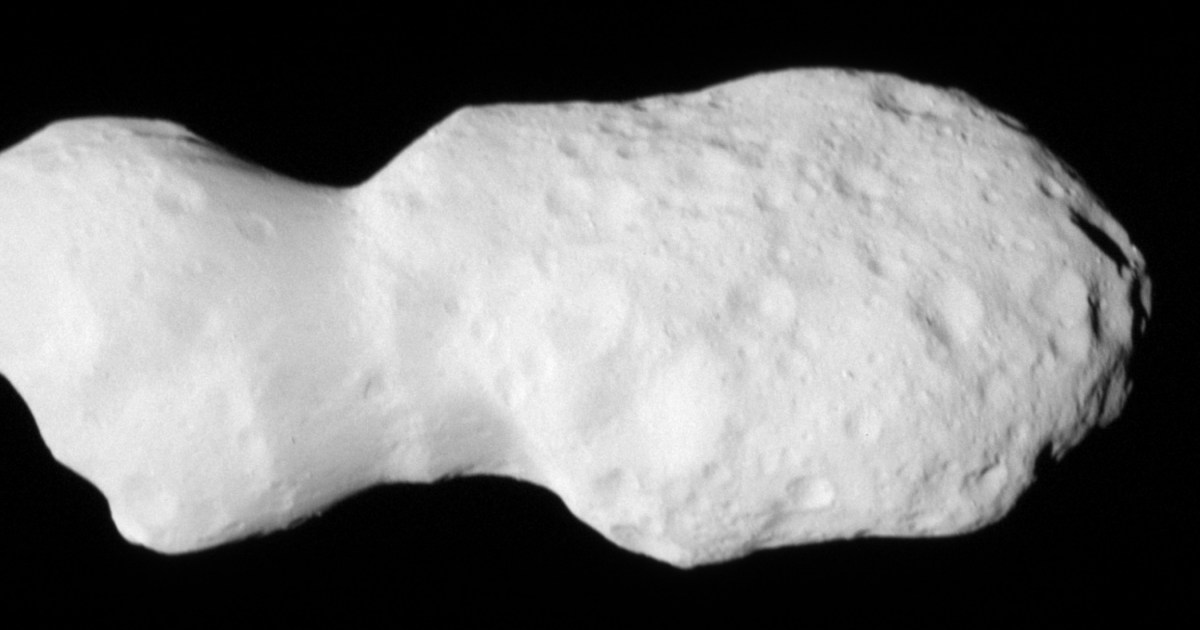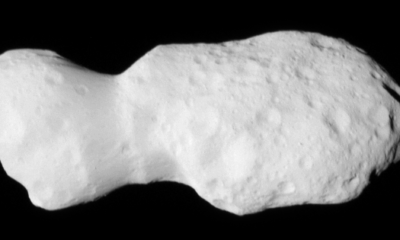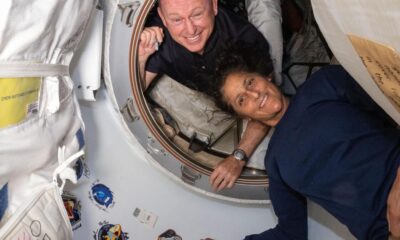Tech News
NASA’s Lucy shares striking close-up of Donaldjohanson asteroid

NASA has released the first up-close images of the Donaldjohanson asteroid, taken by its Lucy spacecraft during a recent flyby approximately 139 million miles (223 million km) from Earth.
Our #LucyMission took a look at asteroid Donaldjohanson, its second asteroid encounter on its journey to Jupiter’s Trojan asteroids. The first images reveal a unique fragment of an asteroid that formed about 150 million years ago! Find out more: https://t.co/Bgg5CkQfYd pic.twitter.com/lgZRG8Qngh
— NASA (@NASA) April 21, 2025
Prior to the Lucy spacecraft’s flyby, Donaldjohanson had only been observed from Earth, with no previous spacecraft having approached it closely. The encounter by Lucy provides the first detailed, high-resolution views of the asteroid, believed to be around 150 million years old, showcasing its shape, geology, and other characteristics for the first time.
The images captured by Lucy were taken as the spacecraft passed within approximately 600 miles (960 km) of Donaldjohanson on April 20.
“Asteroid Donaldjohanson exhibits complex geology,” stated Hal Levison, principal investigator for Lucy. “Studying these intricate structures in detail will offer valuable insights into the building blocks and collisional processes that contributed to the formation of the planets in our solar system.”
The team analyzing the close-up images was surprised by the peculiar shape of the narrow neck connecting the two lobes, described by NASA as resembling “two nested ice cream cones.”
Initial analysis suggests that the Donaldjohanson asteroid is approximately 5 miles (8 km) long and 2 miles (3.5 km) wide at its widest point, larger than originally estimated.
NASA noted that it will take a few more days to download the remaining data from the spacecraft’s encounter, which will help in determining the asteroid’s overall shape more accurately. Data collected by Lucy’s other scientific instruments, including the L’Ralph color imager and infrared spectrometer, and the L’TES thermal infrared spectrometer, will be retrieved and analyzed in the coming weeks.
In 2023, Lucy also conducted a close flyby of the Dinkinesh asteroid, but neither Dinkinesh nor Donaldjohanson is the primary target of the Lucy mission. These encounters were part of the spacecraft’s journey to the Jupiter Trojan asteroid Eurybates, scheduled to be reached in August 2027.
“The early images of Donaldjohanson once again demonstrate the impressive capabilities of the Lucy spacecraft in advancing scientific discovery,” said Tom Statler, program scientist for the Lucy mission. “The potential to unlock new insights into the history of our solar system when Lucy reaches the Trojan asteroids is significant.”
For those curious, the asteroid Donaldjohanson is named after American paleoanthropologist Donald Johanson, known for discovering the “Lucy” fossil skeleton in Ethiopia in 1974, a pivotal find in the study of human evolution. The naming of the asteroid honors Johanson’s contributions to science and creates a symbolic connection with NASA’s Lucy spacecraft, named after the famous fossil.
-

 Destination8 months ago
Destination8 months agoSingapore Airlines CEO set to join board of Air India, BA News, BA
-

 Breaking News10 months ago
Breaking News10 months agoCroatia to reintroduce compulsory military draft as regional tensions soar
-

 Gadgets3 months ago
Gadgets3 months agoSupernatural Season 16 Revival News, Cast, Plot and Release Date
-

 Tech News12 months ago
Tech News12 months agoBangladeshi police agents accused of selling citizens’ personal information on Telegram
-

 Productivity11 months ago
Productivity11 months agoHow Your Contact Center Can Become A Customer Engagement Center
-

 Gadgets3 weeks ago
Gadgets3 weeks agoFallout Season 2 Potential Release Date, Cast, Plot and News
-

 Breaking News10 months ago
Breaking News10 months agoBangladesh crisis: Refaat Ahmed sworn in as Bangladesh’s new chief justice
-

 Toys12 months ago
Toys12 months ago15 of the Best Trike & Tricycles Mums Recommend





















